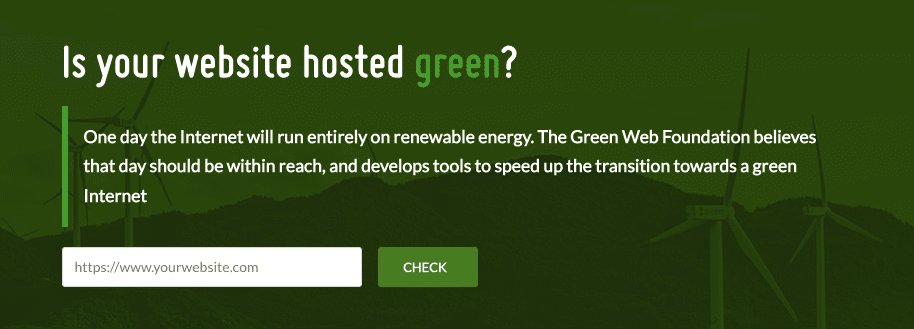The internet accounts for 3.7% of global greenhouse gas emissions, which is roughly equivalent to the aviation industry – and this is set to double by 2025. With nearly two billion websites on the internet today, reducing the impact of each one could have a huge positive effect on net-zero goals.
Google, for example, has invested a large amount of effort and money into going carbon neutral, by using more efficient servers, powering them with green energy, and using renewable energy certificates.
While it obviously varies massively depending on the website, the average site produces 1.76g of C02 for every page view. The more complicated a website is, the greater its energy – and climate – impact.
Data from the HTTP Archive reveals that websites are generally becoming less efficient, with lots of images and videos slowing downloading times and using more energy. So how can you make your website carbon neutral? Read on for our top tips.
1. Switch to a green web host
One of the easiest ways to reduce your site’s carbon emissions is to use a web host with strong green credentials. There are plenty to choose from, so consider switching to a host that uses only renewable energy to power its servers and data centres. If you’re locked into a contract or don’t want to switch, then why not contact your hosting company and ask them if they have plans to make their operations greener? Make it clear that you’re more likely to renew if they up their game.

Is your web host already green? There’s a quick way to check on the Green Web Foundation site.
2. Reduce the number of images per page
Images make pages bigger and more energy-intensive. The larger the file, the more entry is needed to load the image. Reducing the number of images and their size will reduce your site’s carbon footprint. Using SVG graphics instead of PNGs, JPEGs, or GIFs can also improve loading speeds and reduce energy use.
Alternatively, use a plugin to automatically compress your images and increase the speed of your website.
3. Reduce your use of videos
Websites have got more and more complex and snazzy. Businesses compete to offer the best UX and entice customers to enter the sales funnel, with auto-playing videos and GIFs everywhere. Consider stripping your site back, and focusing on functionality and simplicity.
According to The Shift Project, online video generates 60% of world data flows and more than 300 million tons of CO2 per year. Removing and reducing video is an excellent way to cut down your site’s impact. Good design and compelling copy will mean that users don’t miss the flashier features, and your site will have a much smaller carbon footprint.
4. Less content is more
Are you a content hoarder?
So many websites are full of out-of-date content that adds no value, SEO or otherwise, to their customers. Reduce your footprint by deleting old blogs and pages that receive few if any visits, and radically streamline your website.
5. Research off-setting carbon emissions
Finally, there are also ways to off-set the unavoidable carbon emissions of having a website. Reducing it first is the best option for the planet, but if you want to try and be fully neutral, then consider off-setting the remaining carbon emissions.
There are hundreds of schemes that promise to do this, so choose carefully: some research is required to find ones that really deliver and aren’t greenwashing. If you want to find out how we chose to offset our carbon emissions, read about our sustainability journey.
So there you have it: five ways to make your website greener.
And remember, greener is lighter! By reducing your content, videos and images, you are actually providing a fresher and more intuitive experience for your visitors. With a little imagination and care it’ll be just as dazzling as that of your competitors.
If you would like to discuss how Isoline can overhaul your website and make sure your copy sparkles, get in touch at: hello@isolinecomms.com



